Sigma 30 mm f/1.4 EX DC HSM
8. Vignetting
In the case of Olympus E-3, even the maximum aperture won’t give us any serious reasons to complain. The light falloff in the corners of the frame, in this case, totals 27% (-0.90 EV) and lowers to 18% after using f/2.0. At f/2.8 the problem disappears entirely, as there vignetting reaches only 11%.
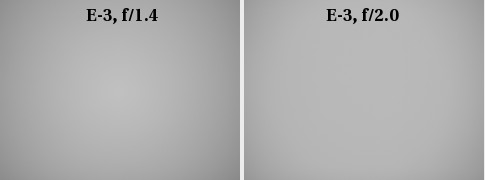
Please Support UsIf you enjoy our reviews and articles, and you want us to continue our work please, support our website by donating through PayPal. The funds are going to be used for paying our editorial team, renting servers, and equipping our testing studio; only that way we will be able to continue providing you interesting content for free. |
- - - - - - - - - - - - - - - - - - - - - - - - - - - - - - - - - - - - - - - - - - - - - - - -
Another sensor, in terms of size, is the one used in Canon 20D. Here we have some more problems. At the maximum aperture vignetting reaches 35% (-1.26 EV) and falls less willingly with stopping down the aperture. At f/2.0 we reach the value of 30% (so more than with Olympus “wide open”), at f/2.8 we reach 24%, at f/4.0 still 20% and only after using f/5.6 the aberration stops being a problem (12%).

While when measuring distortion and coma the differences between a 1.5x factor and 1.6x factor were noticeable, in the case of vignetting they blur. The results obtained for A100, D200 and K10D sensors are very similar, and within the quality control scattering, unanimous in what we sat with Canon. For 10-megapixel Sony sensors, at the maximum aperture, vignetting reaches 32-36%, to fall to 27-30% at f/2.0. At f/2.8 we have the level of 21-24%, and at f/4.0 17-20%. Similar to 20D, only f/5.6 aperture ensures we get rid of the vignetting problem, which in this case totals from 10 to 12%.



To sum up the behavior in this category, we can write that only the 4/3 system users won’t have the right to serious complaints. In the case of all the others, vignetting may make life a misery. Still, we need to remember about keeping an adequate to the problem scale. Lenses of 50 mm class and f/1.4 brightness, mounted on full-frame sensors, so giving the same angle of view as the tested Sigma on APS-C/DX, can show vignetting of almost 70%, so twice as large than the worst behavior observed in this test…
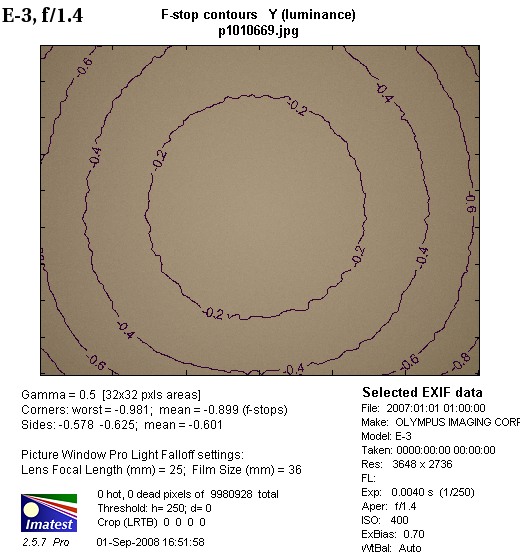 |
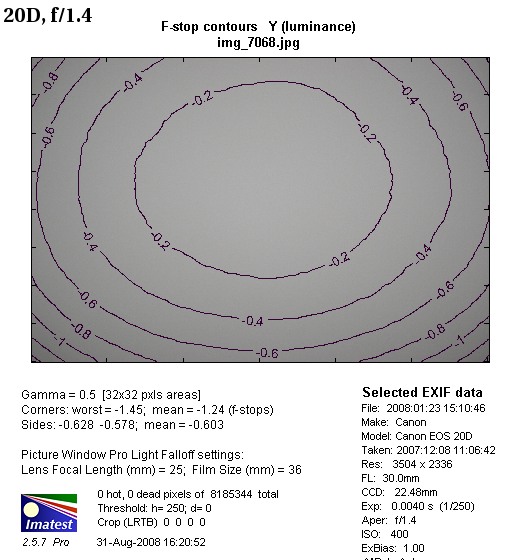 |
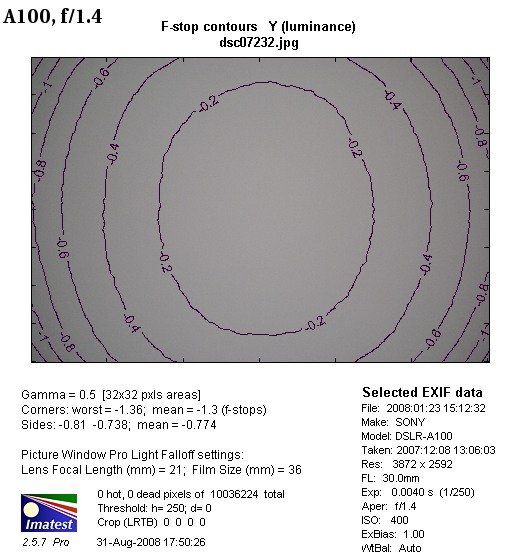 |
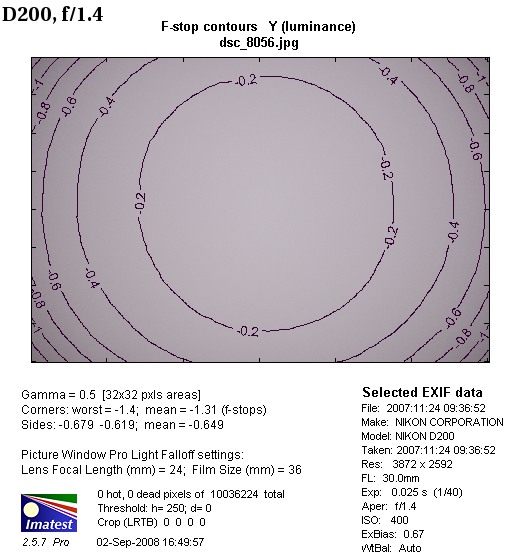 |
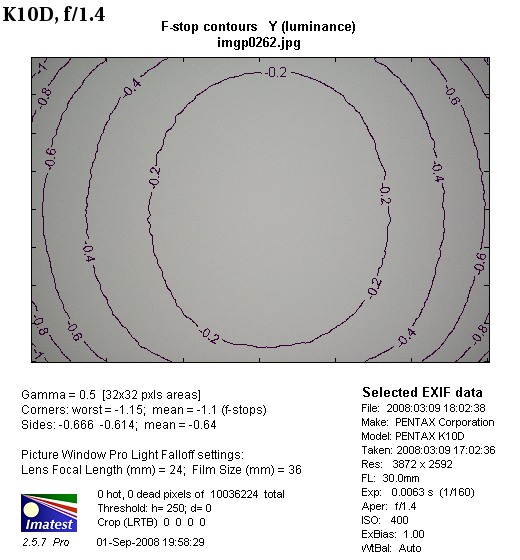 |






